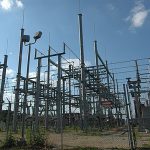Canadian Power Grid Facing Increased Weather Risk

Image courtesy of Tony Hisgett under Attribution 2.0 Generic License, resized to 700 x 391 pixels.
According to the North American Electric Reliability Corporation (NERC), the Canadian power grid is becoming increasingly vulnerable to the risk of extreme weather. Of course, this is not unique to Canada, but our neighbors up north are facing some unique challenges.
Why the Canadian Power Grid is at Risk
According to Francis Bradely, CEO of the industry association Electricity Canada, the country has seen record peaks in electricity demand the last 2 years during periods of extreme weather. Unlike the U.S. where summer storms are the most frequent cause of outages, in Canada, although not immune to extreme heat events, winter storms are often the culprit. And this is in spite of the fact that Canadian utilities are generally better prepared for the effects of cold weather compared to utilities in the U.S. and elsewhere.
For example, in Jan. 2024, customers in Alberta were implored to reduce their usage to avoid rotating blackouts as temperatures approached -40 degrees Celsius! Luckily, no blackouts were required, but the risk was absolutely real. In fact, Alberta has issued 17 grid alerts since 2021 – up from 4 issued in the previous 3 years.
The risk of increasingly severe weather is exasperated by the fact that Canada, like the U.S. and many countries around the world, is looking to make electric vehicles (EVs) ubiquitous, as well as increase reliance on clean energy sources and decrease reliance on fossil fuel sources.
To sum it up, there is little doubt that Canadian electric utilities face challenges, maybe even more so that U.S. utilities. The best course of action is to prioritize having a best-in-class emergency preparedness function. It is important that the Canadian power grid continuously evolve via the introduction of new technologies and hardening approaches. But at the end of the day, it’s tough to fight Mother Nature – thus, it’s critical to focus on ways to optimize the response.



